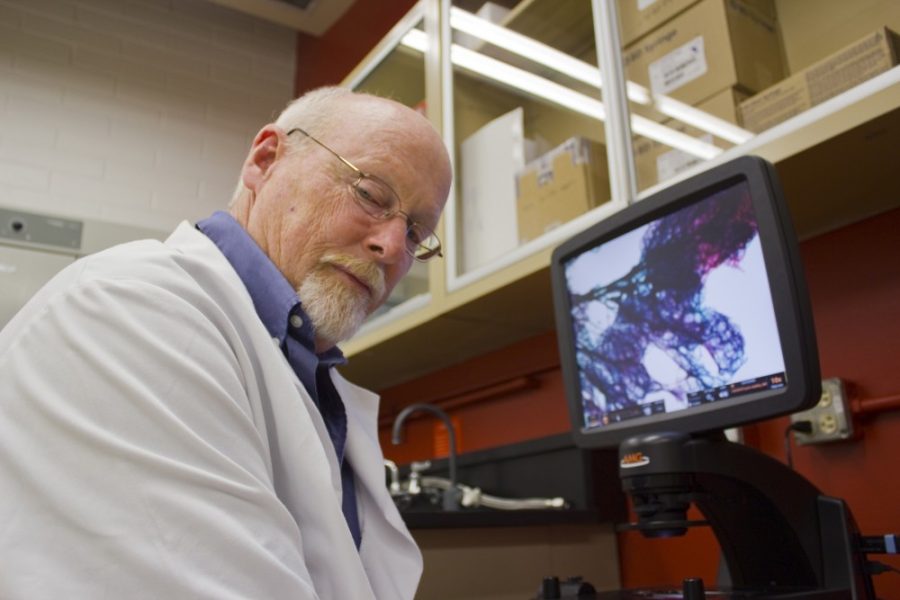A UA professor has been recognized for his work as a “pioneer” in stem cell banking.
David Harris, professor of immunobiology, was awarded the Arizona BioIndustry Association 2012 award for “20 Years of Discovery and Innovation.”
Harris’ recognition is the culmination of decades of work in the field of stem cell research. Harris came to the UA 23 years ago from the University of North Carolina and said he was interested in improving the bone marrow transplant process. As a result, he began to use a process called cord blood banking. In 1991, Harris became the first person to bank stem cells for future use, which includes saving them for future treatments.
“It’s nice to end up being recognized for something that you have worked on for a long time,” Harris said. “Taking something and making it important for everyday life for people to improve their life is amazing. From starting with animal models and moving to human beings is huge; it’s nice to see it go from one point to another.”
Harris said he banked stem cells for future use by preserving his first child’s cord blood stem cells. A year later, Harris founded the Arizona Cord Blood Bank, which later became the Cord Blood Registry. Harris continues to serve as Chief Science Officer of the company, which is the largest cord blood stem cell bank in the world.
“I had always been interested in science and particularly in biological sciences,” Harris said. “I was quite interested in sciences in general and got my degree in immunology. The general interest in science has always been there since an early age. Stem cells is the one I find to be most interesting these days.”
The Arizona BioIndustry Association is made up of businesses as well as research and government organizations and those associated with other professions involved in biosciences. The annual Arizona BioIndustry Association Awards was held at the Phoenix Convention Center this year.
“In the late 1980s, it was discovered that you could find left over blood cells in the umbilical cord after the baby was born,” Harris said. “Early on, we realized this was going to be an important source of stem cell transplant. After 15 years, we realized those stem cells present in umbilical cords had gone from the research stage into the treatment process.”
Harris said that the support from the UA community during the progress of his reasearch is what enabled him to come this far.
“The opportunity to be able to translate my work into real companies and then have the opportunity to make a positive impact in patients’ lives is important to have,” Harris said. “That opportunity here is one of the things that probably kept me here, and to have the support of the university to do that was great because you don’t always have that.”









